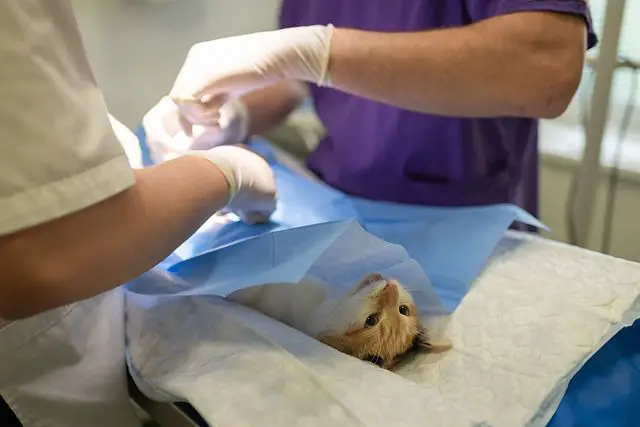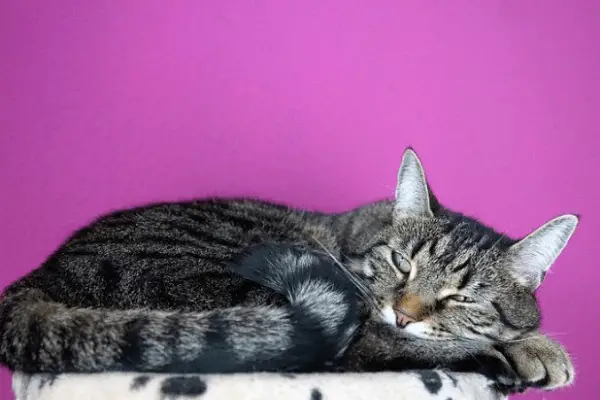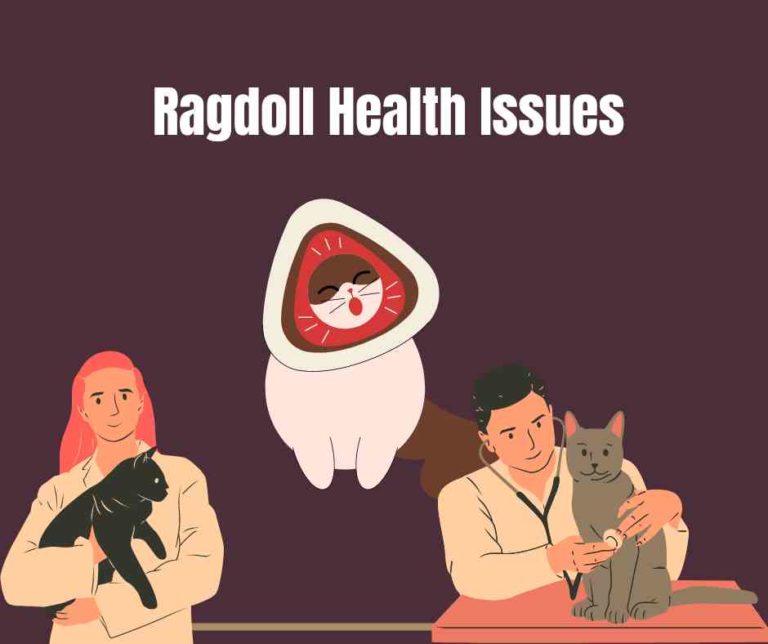How Do You Know If Your Cat Has Rabies [9 Hints]
![How Do You Know If Your Cat Has Rabies [9 Hints] How Do You Know If Your Cat Has Rabies](https://petcreeks.com/wp-content/uploads/2023/04/How-Do-You-Know-If-Your-Cat-Has-Rabies.jpg)
How do you know if your cat has rabies? Let’s find out together…
Your adorable feline friend can bring joy and happiness to your life, but, did you know that cats can get rabies, just like dogs?
Rabies is a serious illness that can affect both animals and humans, and it’s important to know the signs of rabies in cats.
In this blog post, we’ll take a closer look at how to tell if your cat has rabies and what you should do if you suspect your cat has been infected.
How Do You Know If Your Cat Has Rabies
Rabies is a serious viral disease that can affect cats, and early symptoms of rabies in cats may include fever, decreased appetite, and lethargy.
As rabies progresses in cats, symptoms can include weakness or paralysis of the legs, seizures, hypersalivation, difficulty breathing, and abnormal behavior.
There is no definitive test for rabies in living animals, so if you suspect your cat has been exposed to rabies, you should take them to a veterinarian immediately.
Unfortunately, there is no known cure for rabies in cats, and the disease is fatal once symptoms appear.
Let’s break it down further…
Signs and Symptoms of Rabies in Cats
Here are some common signs and symptoms of rabies in cats:
1. Hyperactivity
Some rabid cats may exhibit hyperactivity and restlessness, which can lead to accidents.
They might act erratically, such as by pacing or turning in circles, and they might be more sensitive to touch or sounds.
It’s crucial to give your cat a calm and quiet environment if they are acting hyperactively.
To assist control your cat’s hyperactivity, you can also talk with your veterinarian about prescription choices.
2. Paralysis
Cats who have rabies may experience paralysis, especially in their rear legs.
They may find it difficult to walk or move around as a result, and they may also experience bladder and bowel incontinence.
When rabies affects cats, paralysis can be a dangerous symptom.
It’s crucial to seek veterinarian attention right once if your cat is paralyzed.
Prescription drugs, physical therapy, and supportive care are all potential treatment choices.
3. Unusual vocalizations
Cats with rabies sometimes make strange sounds, such as growling, hissing, or screaming.
Additionally, they might vocalize more frequently or in a distinctive tone from typical. Both the cat and its owners may find this upsetting.
Unusual vocalizations from your cat could be an indication of pain or suffering.
To identify the underlying cause of the vocalizations and to administer the proper therapy, it is crucial to seek veterinarian care.
4. Sudden Aggression
Cats with rabies may become hostile to people and other animals.
They may strike without warning and exhibit other aggressive behaviors like growling or hissing.
When cats have rabies, aggression can be a serious symptom. It’s crucial to get veterinarian attention right away if your cat is showing indications of aggression.
Your cat’s symptoms can be managed by your vet, who may also suggest behavior modification strategies to assist your cat stop acting aggressively in the future.
5. High body temperature (Fever)
The most typical sign of cat rabies is a high body temperature or feverish feeling.
If a cat has rabies, its temperature may rise above 102.5 °F, and it may feel warm to the touch.
Applying a cool, moist cloth to your cat’s body will help lower their temperature if they have one.
Check that the fabric is not excessively cold because this can result in hypothermia.
It’s crucial to keep an eye on your cat’s temperature and seek medical attention if the fever lasts or rises too high.
6. Difficulty Swallowing and Excessive Salivation
It may be challenging for the cat to consume food or liquids if it has rabies since it can damage the swallowing muscles.
When trying to swallow, they could make choking or gag noises, and they might also have excessive salivation.
Keep your cat’s mouth and chin dry and clean if they are drooling excessively.
You can remove the saliva by gently wiping it away with a moist towel or cloth.
You can try giving your cat little, moistened food bits or syringe-feeding a liquid diet if you notice that they are having trouble swallowing.
It’s crucial to seek veterinary attention if your cat is slobbering excessively or having trouble swallowing.
7. Seizures
Cats with rabies may experience seizures. These might be anything from slight twitches to complete convulsions.
The virus can harm the cat’s brain and nervous system, which can result in seizures.
It’s crucial to keep your cat secure and at ease if they are experiencing seizures. Any furniture or things that could hurt your cat during the seizure should be moved.
Never attempt to restrict or place anything in your cat’s mouth. Immediately seek veterinary care.
8. Rapid Changes in Appetite
Cats with rabies may lose their appetite rapidly, which can result in malnutrition and weight loss.
Additionally, they can grow bored with their typical favorite foods and snacks.
In order to attempt and pique your cat’s interest in eating, it’s vital to provide them with a variety of different meals.
To make sure that your cat is getting the nutrients they require, you can also talk to your veterinarian about nutritional supplements.
9. Rapid Changes in Sensitivity
Cats with rabies may develop excessive sensitivity to touch or sound.
They could become hostile when touched or approached, or they might be easily startled by abrupt movements or loud noises.
Make sure your cat has a peaceful, calm environment if they are touch or sound-sensitive.
Avoid making sudden or loud noises that can surprise your cat.
Seek veterinarian attention if your cat is being aggressive or anxious so that the cause and the best course of action can be determined.
Diagnosis of Rabies in Cats
The diagnosis of rabies in cats is typically done through laboratory tests on brain tissue after the cat has died.
It is not possible to accurately diagnose rabies in a living cat, as the disease has a long incubation period and symptoms can take weeks or even months to appear.
Rabies is a serious and potentially fatal disease, so if you suspect your cat has been exposed to the virus, it is important to seek veterinary care immediately.
Your veterinarian can advise you on the best course of action and help determine if testing for rabies is necessary.
It can be done in three phases:
- Physical exam
- Laboratory tests
- Confirmation of rabies
Treatment for Rabies in Cats
There is no treatment for rabies in cats once the symptoms appear because rabies is a viral disease that is almost always fatal in animals, including cats.
Once a cat is showing symptoms, treatment is supportive care to keep them comfortable until they pass away.
The best way to prevent your cat from getting rabies is to keep them vaccinated against the disease.
Cat Humane euthanasia can be recommended if the disease is strongly suspected.
If you suspect your cat has been bitten by a rabid animal, seek veterinary care immediately so that your cat can receive a booster vaccine and be monitored for any signs of infection.
Learn more about comforting a sick cat.
Prevention of Rabies in Cats
The best way to prevent rabies in cats is to keep their vaccinations up-to-date.
In most areas, rabies vaccinations are required by law for all cats.
It is important to bring your cat to the veterinarian for regular checkups to ensure they are healthy and to receive recommended vaccines, including the rabies vaccine.
It is also important to keep your cat indoors and avoid contact with stray animals that may carry the disease.
If you suspect that your cat has been exposed to rabies, seek veterinary care immediately.
Additionally, make sure to report any stray animals or wildlife that appear sick or behave abnormally to local animal control authorities to help prevent the spread of the disease.
Learn more about the common signs that your cat is sick.
FAQs
What is rabies and can cats get it?
Rabies is a virus that affects the nervous system and can be fatal in both animals and humans. Yes, cats can get rabies just like other mammals.
How do cats get rabies?
Cats usually get rabies through a bite from an infected animal such as a raccoon, bat, or another cat.
What are the symptoms of rabies in cats?
The symptoms of rabies in cats can vary, but some common signs include changes in behavior, excessive drooling, aggression, and paralysis.
Can humans get rabies from a rabid cat?
Yes, humans can get rabies from any infected mammal, including cats.
It’s important to seek medical attention immediately if you suspect you’ve been exposed to a rabid cat.
Learn more about humans getting worms from cats.
How can I prevent my cat from getting rabies?
The best way to prevent your cat from getting rabies is to keep them up to date on their vaccinations and avoid contact with wild animals or stray cats.
Learn more about different ways indoor cats get parasites.
What should I do if I think my cat has rabies?
If you suspect your cat has rabies, it’s important to seek veterinary care immediately.
Do not attempt to handle or treat the cat yourself, as rabies is a serious and potentially fatal disease.
Learn more about comforting a dying cat.
Conclusion
In conclusion, knowing the signs and symptoms of rabies in cats is crucial in preventing the spread of this deadly virus.
If your cat has been acting strangely or displaying any of the symptoms mentioned earlier, it’s important to seek veterinary attention immediately.
Early diagnosis and treatment could mean the difference between life and death for your beloved feline friend.
Learn more about different ways indoor cats can get fleas.



![10 Signs of Depression in Cats [Causes & Tips] Signs of Depression in Cats](https://petcreeks.com/wp-content/uploads/2021/07/Signs-of-Depression-in-Cats.jpg)


